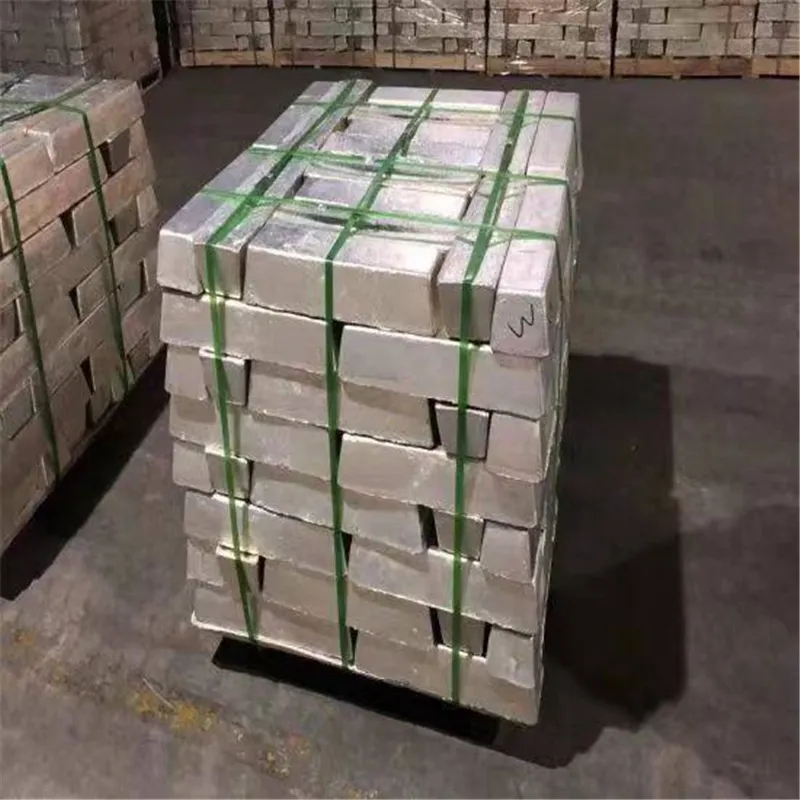Magnesium ingot is an important metal material widely used in aerospace, automotive industry, electronic equipment manufacturing and other fields. With the continuous advancement of science and technology and the increase in demand, the production process of magnesium ingots has also undergone a series of innovations and improvements to meet the growing market demand. This article will introduce the production process of magnesium ingots and the importance of some innovative technologies to the magnesium industry.

Magnesium ingot production process
Magnesium is a lightweight metal whose production process usually involves the following key steps:
1. Ore mining: The main ore of magnesium is magnesite, which mainly exists in the earth's crust. Ore mining typically involves steps such as mining, ore crushing, and leaching to obtain the magnesium-containing ore.
2. Refining process: Extracting pure magnesium from magnesium ore requires a series of refining steps. The most common methods are the Pidgeon process and electrolysis.
1). Pidgeon process: This is a thermal reduction method that involves reducing magnesium ore along with coal at high temperatures to obtain less pure magnesium. This method is still widely used in some places, but it consumes more energy and produces by-products that need to be disposed of.
2). Electrolysis: Electrolysis is a relatively modern method that obtains high-purity magnesium by electrolyzing magnesium salts. This method, usually performed in electrolysers, requires lower energy consumption and produces fewer by-products. Electrolysis is becoming increasingly popular in the magnesium industry.
3. Alloy Preparation: Magnesium alloys are required in most applications because pure magnesium has poor mechanical properties. Preparing magnesium alloys usually involves mixing pure magnesium with other alloying elements such as aluminum, zinc, manganese, etc. to obtain the desired performance characteristics.
4. Casting and forming: Alloys are usually cast in a liquid state into ingots or other shapes, and then heat treated and machined to meet the needs of different applications.
5. Quality control: Throughout the entire production process, quality control is crucial. Through chemical analysis, metallographic microscopy and other methods, we ensure that the quality of the final product meets the standards.
Innovative technology drives the rise of magnesium industry
In recent years, the magnesium industry has made tremendous progress, thanks to the application of a series of innovative technologies:
1. High-temperature electrolysis technology: New high-temperature electrolysis technology makes the production of pure magnesium more efficient and environmentally friendly. This approach reduces the energy required for electrolysis and reduces the carbon footprint.
2. New magnesium alloys: Researchers continue to develop new magnesium alloys to meet the needs of different fields. These alloys offer higher strength, corrosion resistance and lightweight properties and are widely used in areas such as the automotive industry, aerospace and electronic equipment manufacturing.
3. Circular economy: The magnesium industry is also developing in a more sustainable direction, adopting circular economy principles and focusing on resource recycling and waste utilization to reduce dependence on natural resources.
4. 3D printing technology: 3D printing technology is emerging in the manufacturing field, and magnesium materials are also widely used in 3D printing. This technology allows for the manufacture of complex-shaped parts, improving production efficiency.
5. Automation and smart manufacturing: The application of automation and smart manufacturing technology makes magnesium production more efficient and controllable, reducing the occurrence of human errors.
In general, the production process of magnesium ingots is constantly evolving, and innovative technologies are driving the development of this industry. As demand grows and technology advances, magnesium will continue to play an important role in multiple fields, contributing to the advancement of modern industry and technology. At the same time, the industry is also working hard to reduce environmental impact and pursue a more sustainable future.